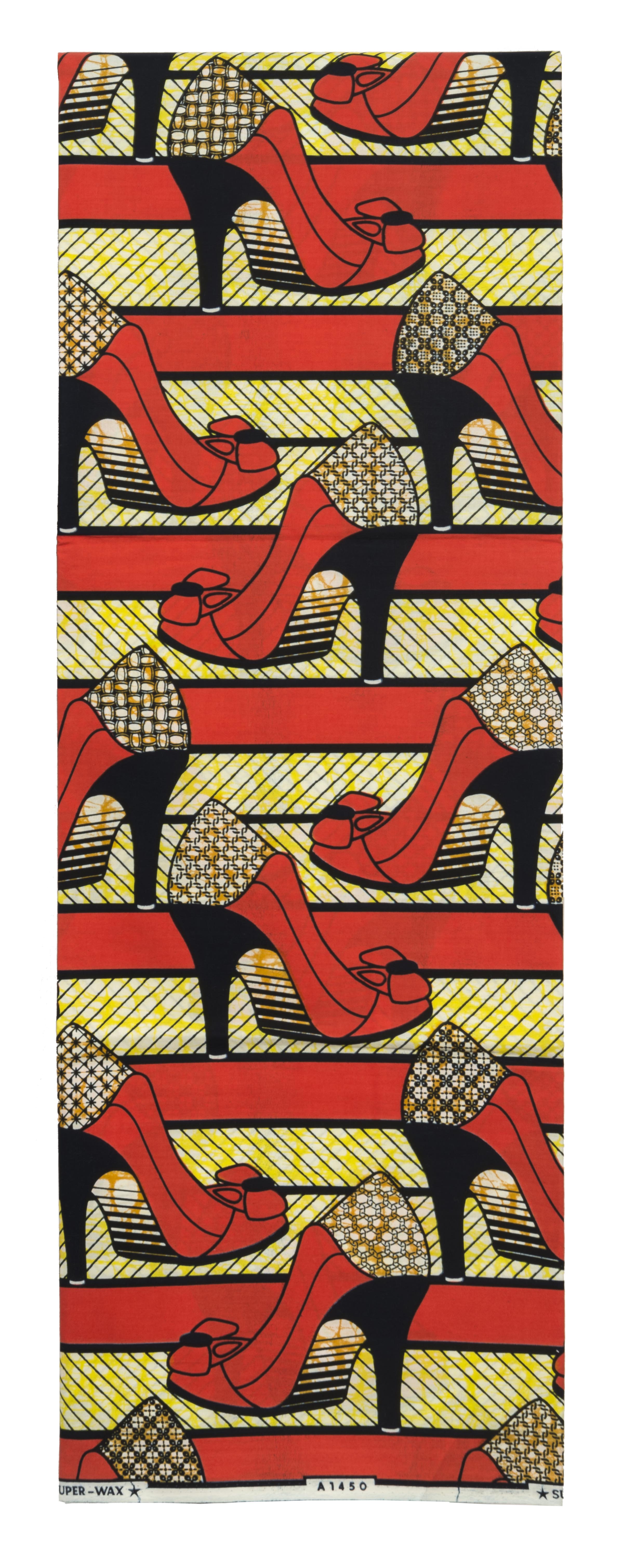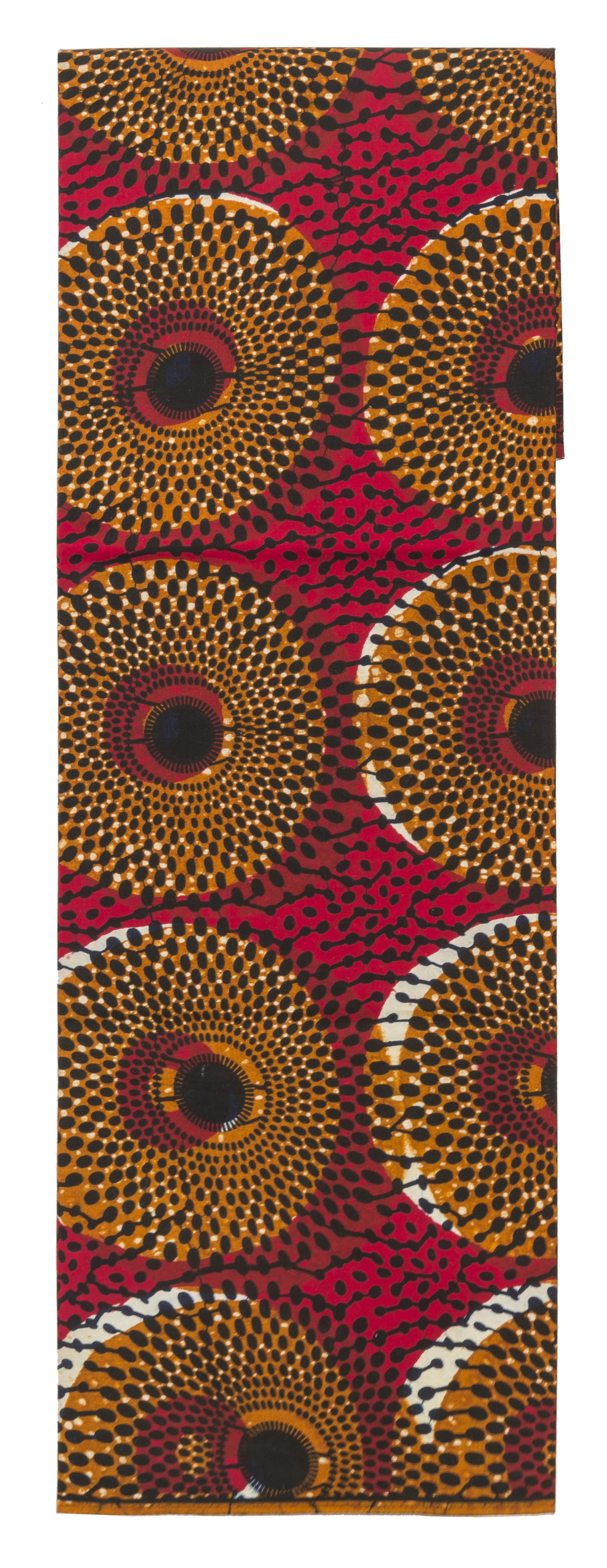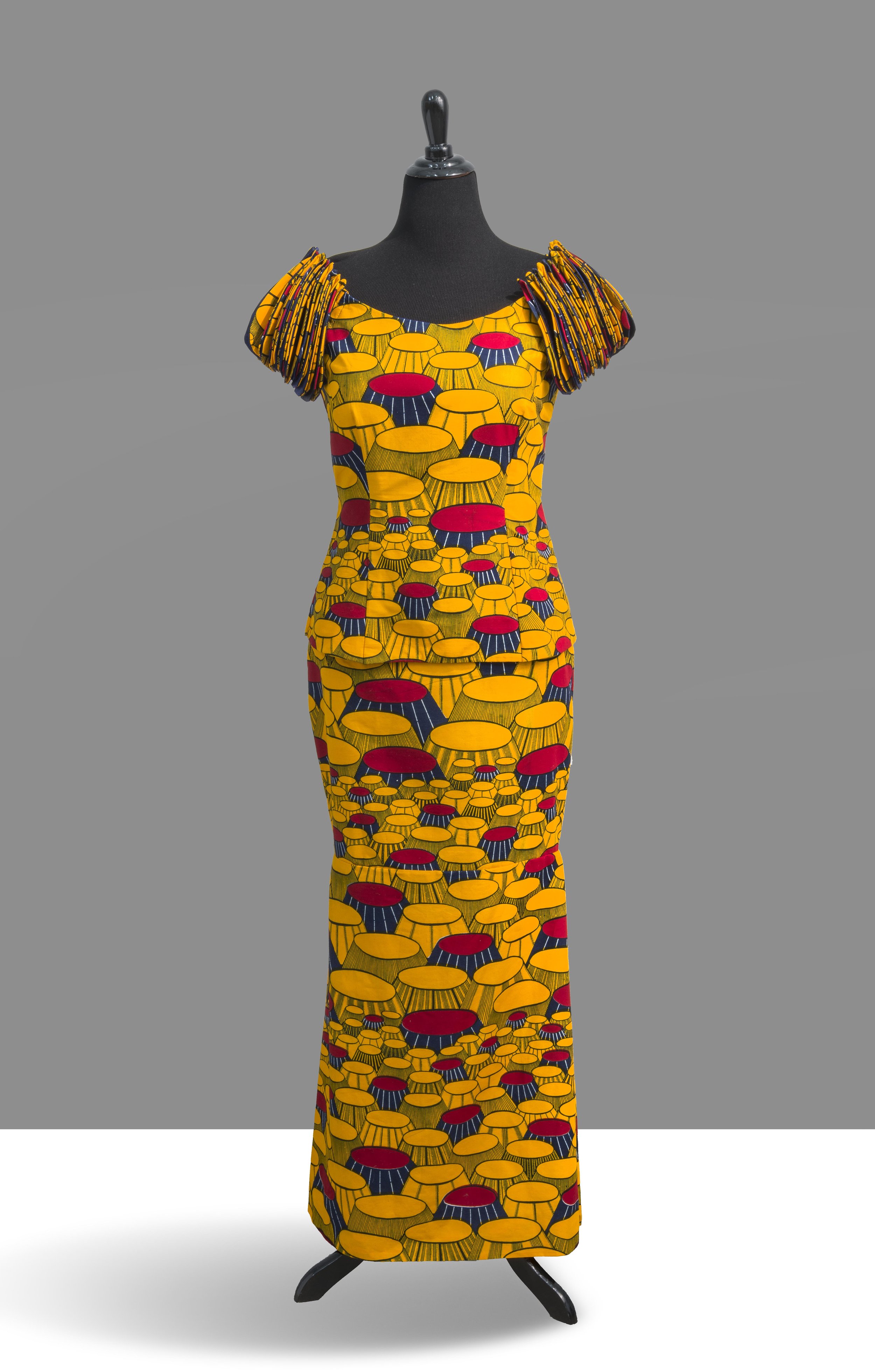Wandering Spirit traces the developmental pathway of the African wax print and tells how these fabrics reflect the stories, dreams, and personalities of the people who wear them.
Maybe better known as by its Javanese description batik, the handiwork on display is based on a traditional technique of wax-resistant dyeing in which a pattern is made on both sides of cotton fabric with warm liquid wax applied by a small, brass cup with a spout known as a tjanting. After the wax cools and solidifies, the cloth is dyed with a primary color and the wax is then removed, revealing the pattern where the wax had once been.
J.B.T. Prévinaire, a Dutch cotton printing mill owner, was instrumental in developing a machine that could print imitation batiks. Despite the technological advance, “La
Javanaise” produced imperfections in the print that did not appeal to the Javanesebuying public, so the European printers found themselves looking for new markets around the world. After many years of transcontinental exploratory travels and investigations, they identified Africa as the new potential market for their wax prints.
The success of the wax prints on the African scene is driven by many factors, such as the culture, taste and desires of African consumers. Clothing in Africa serves an important means of communication, sending hidden messages and retelling local proverbs.Clothing also depicts a person’s social status and position, political convictions,ambition, marital status, ethnicity, age, sex and group affiliations.



